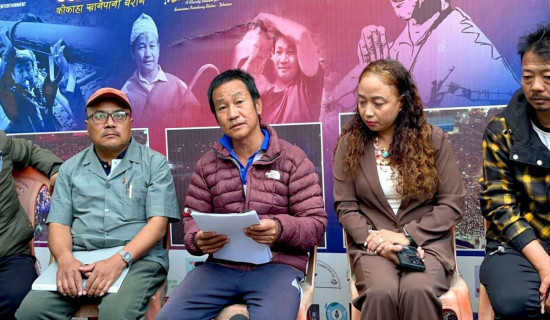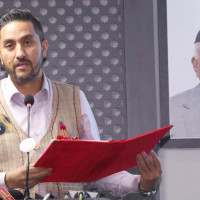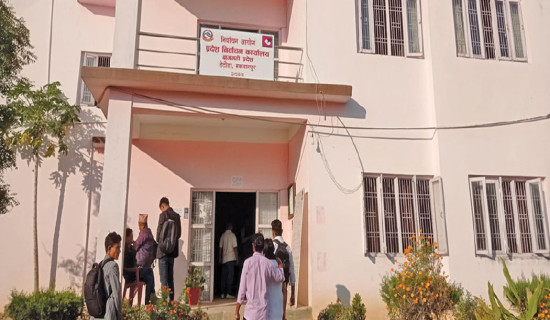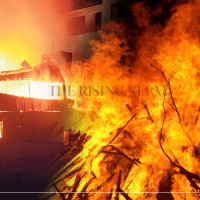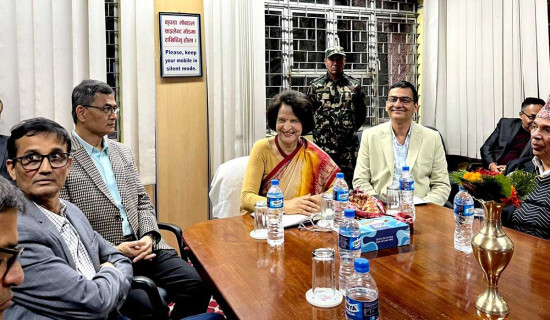- Tuesday, 2 December 2025
Legacy Of Gorkhapatra In Journalism
For over a century, Gorkhapatra has remained a cornerstone of Nepali journalism, shaping public discourse, preserving national identity, and setting foundational standards for news reporting in Nepal. Established in 1901 during the Rana regime, it is the oldest continuously published newspaper in the country and a witness to Nepal’s political, social, and cultural transformations. Its journey reflects the evolution of Nepali journalism—from a state-controlled mouthpiece to an entity grappling with modern challenges, media competition, and the expectations of an increasingly digital audience. While its legacy remains indisputable, Gorkhapatra has also faced criticism over its slow adaptability, government influence, and limited efforts to become a fully independent news source.
Historical beginnings
Founded on May 6, 1901 (Baishakh 24, 1958 BS) by then-Prime Minister Dev Shumsher Rana, Gorkhapatra was initially conceived as a tool for disseminating government notices and reinforcing state propaganda. Published weekly, it was instrumental in shaping early print journalism in Nepal. However, its primary purpose was to safeguard the ruling Rana oligarchy's interests rather than foster free and investigative journalism. Nevertheless, Gorkhapatra introduced Nepali citizens to the concept of formalised news reporting and played an indirect role in increasing literacy and public engagement with governance. Despite its restrictive beginnings, its presence marked a shift in how information was structured and communicated, preparing the ground for future journalistic developments.
The fall of the Rana regime in 1951 marked a significant transformation for Gorkhapatra. With the advent of democracy, the newspaper expanded its scope, covering broader socio-political issues that resonated with Nepal’s transitioning political structure. As Nepal sought to establish a democratic identity, Gorkhapatra transitioned from a weekly to a biweekly in 1961 and eventually became a daily newspaper in 1965 under King Mahendra’s Panchayat system. While this shift reflected the state’s intent to modernise its media landscape, Gorkhapatra remained under government influence. Although it diversified its content, covering economic, social, and political issues, its editorial freedom was constrained, limiting its ability to function as an independent watchdog of state affairs. Critics argue that during this period, Gorkhapatra legitimised official narratives rather than scrutinising them, a trend that persisted even in the post-Panchayat era.
Restoring multiparty democracy in 1990 marked a defining moment for Nepali journalism. Press freedom expanded, and private media outlets gained traction, forcing government-run publications like Gorkhapatra to adapt and become more competitive. The newspaper moved towards more professional journalism standards, focusing on balanced reporting, investigative pieces, and broader thematic coverage. Despite this progress, Gorkhapatra struggled with perceptions of partiality, as it remained a state-run entity. While it played a crucial role in educating citizens during significant historical moments, such as the Maoist insurgency (1996–2006) and the Madhesh Movement, it faced criticism for failing to challenge government narratives with the same rigour as independent outlets. This raises a broader question: Can a state-owned media entity ever be fully independent in its reporting?
Evolution through technology
The rapid rise of digital media in the 21st century has significantly altered Nepal’s journalism landscape. The proliferation of social media, independent digital news platforms, and instant updates has transformed how information is consumed. Traditional print newspapers, including Gorkhapatra, have struggled to maintain readership, as digital outlets provide faster and often more interactive news experiences.
Recognising these shifts, Gorkhapatra launched an online edition, enabling greater accessibility to its archives and real-time reporting. However, critics point out that the newspaper has been relatively slow in adopting cutting-edge digital strategies compared to private media. While private outlets have embraced multimedia journalism—incorporating podcasts, data visualisation, and interactive content— Gorkhapatra has remained mainly within conventional reporting formats. Moreover, its online presence still reflects its institutional constraints, with a continued emphasis on government perspectives rather than investigative deep dives into pressing national issues. As Nepal’s media audience becomes more sophisticated, the challenge for Gorkhapatra lies in balancing state interests with independent journalism credibility.
Beyond Gorkhapatra, the publishing house operates additional media entities that have contributed significantly to Nepal’s journalistic and literary traditions. This newspaper (The Rising Nepal), established in 1965, has provided an international outlook on domestic issues, enabling Nepal to engage with broader global narratives. While The Rising Nepal has maintained its status as an authoritative source for state-backed news, it faces similar limitations as Gorkhapatra regarding editorial independence. Government influence has often shaped its tone, positioning it as an official publication rather than a fully autonomous news outlet.
Other publications of the Gorkhapatra Corporation include literary supplements that have historically nurtured Nepal’s literary ecosystem. These supplements have provided a platform for aspiring writers, poets, and intellectuals, contributing to cultural discourse. However, like the leading newspaper, these outlets have struggled to compete with digital alternatives offering more dynamic and interactive storytelling formats.
Call for independence
Gorkhapatra undoubtedly holds historical significance as Nepal’s longest-running newspaper. It has shaped Nepali journalism, preserved cultural heritage, and provided critical news coverage during key moments in Nepal’s history. However, its journey is also a testament to the challenges faced by government-run media, particularly the difficulty of balancing state narratives with independent journalism ethics. While Gorkhapatra remains respected for its archival value and reliability, it must embrace greater editorial independence to stay relevant in an evolving media landscape. The shifting expectations of Nepal’s audiences demand transparency, investigative depth, and journalistic autonomy—areas where state-owned media still struggle.
The contributions of its sister publication, The Rising Nepal, and other literary ventures underscore the publishing house’s broader role in shaping Nepal’s intellectual and journalistic discourse. Nevertheless, modernisation efforts must extend beyond mere digital presence, including a commitment to journalistic integrity, critical analysis, and adaptability. Despite its constraints, Gorkhapatra remains more than just a newspaper—it is a living archive of Nepal’s history. However, as Nepal’s press freedom continues evolving, so must Gorkhapatra. The challenge lies in redefining its role, not merely as a government mouthpiece but as an institution that upholds the spirit of free journalism while respecting its legacy.
(A PhD in political science from the State University of New York, Buffalo, the author is a faculty member at IACER. govinda@iacer.edu.np)



